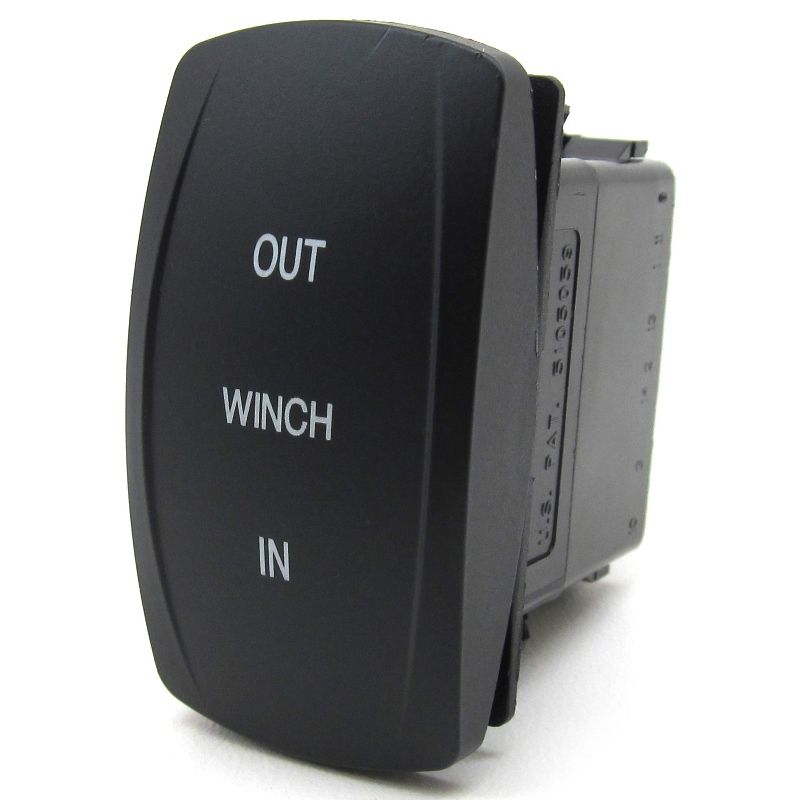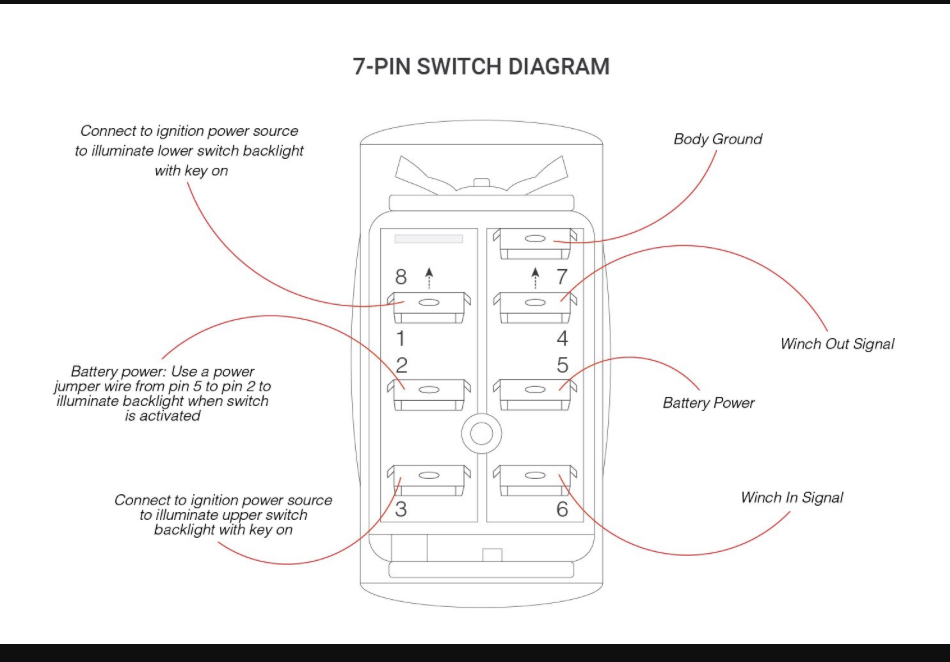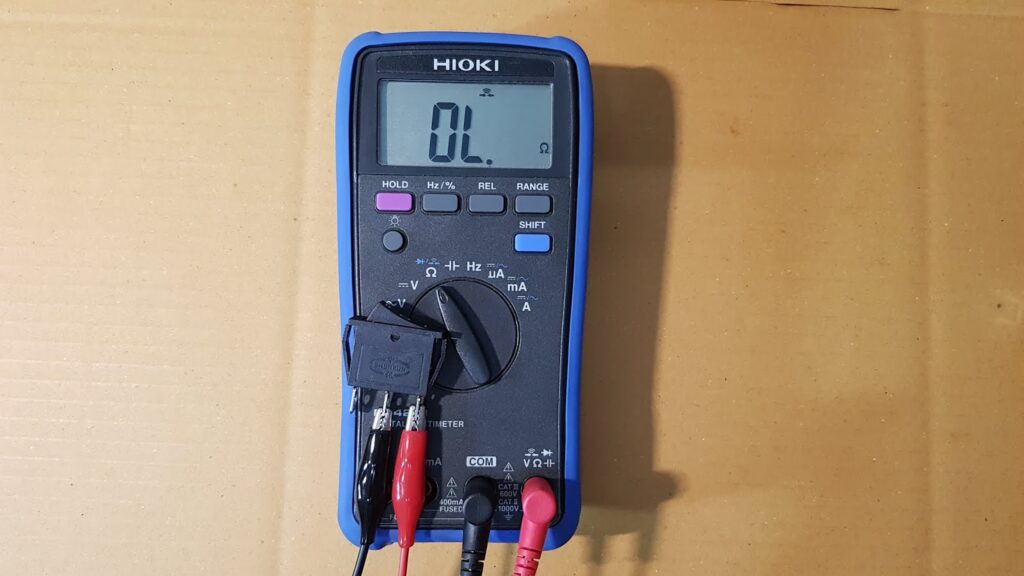A winch rocker switch is a two-position electrical switch commonly used in off-road vehicles to control the winch motor, enabling users to spool the winch cable in or out. Typically mounted on the dashboard or handlebar, it offers intuitive fingertip control for recovery operations. These switches are part of a 12V DC system and play a crucial role in safe winch operation by managing the power flow between the battery, solenoid, and winch motor.
In this comprehensive guide, we’ll explore the inner workings of a winch rocker switch and understand how it contributes to the smooth operation of winches across various applications.
Quick Answer
What is a Winch Rocker Switch and How Does it Work?
A winch rocker switch is a type of momentary control switch that directs electrical current to a winch motor. It works by completing an electrical circuit when pressed, enabling the winch to pull in or release the cable. The switch often manages power flow safely and efficiently through polarity reversal and relay activation.
What is a Winch Rocker Switch?

A good winch rocker switch is an essential component for anyone using a winch on vehicles. It serves as the primary control mechanism for operating the winch, allowing the user to manage heavy loads or navigate challenging terrain precisely and safely.
Importance in Off-Road Vehicles and Heavy Machinery
For off-road enthusiasts, a winch rocker switch is indispensable. When you’re off-roading, you often encounter situations where your vehicle gets stuck in mud, sand, or other difficult terrains.
In these scenarios, a winch is used to pull the vehicle out, and the rocker switch is what controls this operation. It ensures that you have complete control over the winch, enabling you to pull your vehicle out of tough spots efficiently.
How Does a Winch Rocker Switch Control a Winch?

Understanding how a winch rocker switch operates highlights its importance. Let’s examine its functionality in detail.
- Polarity Reversal: The rocker switch changes the direction of current flow, enabling the winch to pull in or release the cable.
- Relay Activation: The relay system helps manage the high current flow, protecting the switch from electrical overload.
- Momentary Control: The switch maintains power flow only while being pressed, providing precise control over winch operations.
Step-by-Step Operation
Activation: When you press the winch rocker switch, it completes an electrical circuit, similar to turning on a light switch.
This action allows electrical current to flow through the circuit, powering the winch motor.
Power Flow: Once the circuit is complete, electricity flows from the vehicle’s battery to the winch motor.
The battery provides the necessary power to operate the winch, energizing the winch motor to perform its function.
Winch Action: Depending on the switch position, the winch will either pull in or release the cable. Pressing the switch in one direction signals the motor to pull the cable in, lifting or pulling a load.
Pressing the switch in the opposite direction signals the motor to release the cable, which then lowers or releases the load.
Electrical Circuit and Power Flow
The electrical circuit of a winch rocker switch is crucial for connecting the vehicle’s battery to the winch motor. Here’s how it works in more detail:
Battery Connection: The switch is wired to the vehicle’s battery, ensuring it can draw power directly from the battery to operate the winch motor.
Wiring to the Winch Motor:
The switch connects to the winch motor through wiring that carries the electrical current from the battery, through the switch, and to the motor.
Proper wiring ensures efficient and safe current flow.
Completing the Circuit: Pressing the rocker switch completes the circuit by allowing the current to flow.
This flow of electricity energizes the winch motor, enabling it to perform the winching action.
Winch Rocker Switch vs. Toggle Switch
Rocker Switch: Offers a low-profile design and momentary control for winch operations, making it ideal for applications that require precise, temporary activation.
Toggle Switch: Uses a lever mechanism and is better suited for simple on/off applications where continuous activation is needed.
Polarity Reversal: Rocker switches excel in handling polarity changes, which are essential for controlling the direction of winch movements (pulling in or releasing the cable).
How Do Relays and Circuit Breakers Support Winch Rocker Switches?
Relays and circuit breakers are additional components that play vital roles in the operation and safety of the winch rocker switch system.
- Relay-Controlled Circuit: The relay acts as a secondary switch to handle high-current loads safely, preventing damage to the rocker switch during winch operation.
Relays: A relay is an electrically operated switch that manages the high current required by the winch motor.
Instead of passing high current directly through the rocker switch (which could damage it), the current flows through the relay.
The relay controls the flow of electricity to the winch motor, ensuring the rocker switch can safely control the winch without handling high currents directly.
- Circuit Protection: Circuit breakers prevent electrical overload by cutting off power flow when excessive current is detected, safeguarding the entire system.
Circuit Breakers: Circuit breakers are safety devices that protect the electrical system from overloads.
In the context of a winch rocker switch, a circuit breaker ensures that if there is excessive current flow (due to a short circuit or overload), it will trip and cut off the power.
This action prevents damage to the electrical components and reduces the risk of fire or other hazards.
Benefits of Using a Winch Rocker Switch
Using a winch rocker switch comes with several advantages:
Improved Control and Precision
The rocker switch allows for precise control over winch operations, making it easier to manage heavy loads or navigate difficult terrains.
Increased Safety During Winching Operations
Safety is paramount, and having a winch rocker switch means you can quickly stop or reverse the winch action if something goes wrong, preventing potential accidents.
Ease of Use and Accessibility
These switches are designed for ease of use. The intuitive rocking motion is simple to understand and operate, even for beginners.
Durability and Reliability in Harsh Environments
Winch rocker switches are built to withstand tough conditions. Whether you’re in the mud, snow, or rain, they continue to function reliably, making them a trustworthy component in any winching setup.
How to Test a Rocker Switch

Visual Inspection
Before conducting any electrical tests, it’s crucial to perform a thorough visual inspection of the rocker switch.
Look closely for any signs of physical damage, such as cracks, dents, or deformities in the switch body or the rocking lever.
These can indicate potential internal damage or issues with the switch mechanism.
Additionally, check for any signs of looseness or play in the rocking lever’s movement. A properly functioning switch should have a smooth, consistent rocking motion without any excessive play or binding.
Inspect the terminals or wire connections for any signs of corrosion, discoloration, or burnt spots. These can indicate electrical arcing or overheating issues, which may have compromised the switch’s functionality.
If you notice any significant physical damage, corrosion, or signs of overheating during the visual inspection, it’s generally advisable to replace the rocker switch, as these issues can compromise its reliability and safety.
Continuity Test
A continuity test is a simple and effective way to check if the rocker switch is functioning correctly from an electrical standpoint. This test can be performed using a multimeter, which is an essential tool for electrical troubleshooting.
Here’s how to conduct a continuity test on a rocker switch:
a. Set your multimeter to the continuity testing mode, which is usually indicated by a symbol resembling a sound wave or a diode icon.
b. Identify the terminals on the rocker switch. Typically, there are three terminals: a common terminal (often marked “C” or “COM”), a normally open terminal (“NO”), and a normally closed terminal (“NC”).
c. With the rocker switch in the “off” position, place one multimeter probe on the common terminal and the other probe on the normally closed terminal. The multimeter should indicate continuity (beep or display a low resistance value).
d. Rock the switch to the “on” position and repeat the test, this time placing the probes on the common terminal and the normally open terminal. Again, the multimeter should indicate continuity.
e. If the continuity test fails in either position, it’s likely that the rocker switch is faulty and needs replacement.
Circuit Test
While the continuity test checks the switch’s internal connections, a circuit test allows you to evaluate the switch’s functionality in a practical setting.
This test requires wiring the rocker switch into a simple test circuit with a load, such as a light bulb or a motor.
a. Connect the common terminal of the rocker switch to the positive terminal of a power source (e.g., a battery or a power supply).
b. Connect the normally open terminal to one side of the test load (e.g., a light bulb or a motor).
c. Connect the other side of the test load to the negative terminal of the power source, completing the circuit.
d. With the rocker switch in the “off” position, the test load should be inactive.
e. Rock the switch to the “on” position, and the test load should activate, indicating that the switch is functioning correctly and allowing current to flow through the circuit.
f. If the test load does not activate when the switch is in the “on” position, or if it remains active in the “off” position, the rocker switch may be faulty and require replacement.
By performing these tests, you can thoroughly evaluate the rocker switch’s condition and functionality.
The visual inspection helps identify physical issues, while the continuity test and circuit test assess the switch’s electrical performance and ability to control the flow of current.
Is a rocker switch the same as a toggle switch?
No, a rocker switch and a toggle switch are not the same, although they serve similar purposes of switching electrical circuits on and off.
A rocker switch has a low-profile, rocking lever motion that tilts a rectangular switch body left or right to change the state of the switch. The rocking motion creates a smooth, easy actuation.
A toggle switch, on the other hand, has a lever that flips up and down or side to side to change the state. The lever protrudes outward more than a rocker switch.
Rocker switches tend to have a sleeker, more modern design and can mount flush. Toggle switches have a more industrial, protruding look. But the key functional difference is the rocking vs lever flipping actuation motion.
How do I know if my rocker switch is bad?
There are a few signs that a rocker switch may be faulty or going bad:
- It doesn’t work at all or is intermittent in operation when rocking it.
- It gets stuck and doesn’t full return to center/neutral position.
- You see signs of physical damage like cracks, burnt areas or loose/broken components.
- There is corrosion buildup on the internal contacts from moisture exposure.
- It feels very loose or “mushy” when trying to rock it.
You can perform simple tests, such as checking for continuity between terminals using a multimeter while rocking the switch in both directions (or) connect it to a test circuit to see if it properly opens/closes.
How do you tell if a rocker switch is on or off?
Most rocker switches have some kind of visual or tactile indicator to easily determine the on/off state:
Visual indicators:
- Symbols or markings showing the on and off position
- A built-in LED light that illuminates for the on position
Tactile feel:
- The rocking lever tilts more to one side for the on position
- There is a defined “click” or detent feel at the on and off positions
The on/off indication works by having the internal movable contacts transferred to connect to the on or off side terminals when rocked.
Can you replace a toggle switch with a rocker switch?
In many cases, yes you can swap a toggle switch for a rocker switch, as long as the rocker switch meets the electrical specs and mounting requirements.
The key things to check are:
- The rocker switch is rated for the required AC/DC voltage and current of the circuit
- The mounting cutout/hole spacing matches between the switches
- The new rocker switch has the same terminal configuration (number of terminals)
You’ll likely need to do minor rewiring to account for any different terminal layouts. Make sure to properly join the wires securely.
It’s also possible an adapter plate may be needed if mounting holes don’t quite line up.
Why are rocker switches better?
Rocker switches offer some advantages over traditional toggle switches:
- Low profile/sleek design allows flush mounting for a cleaner look
- Rocking motion is smoother and easier to actuatecompared to toggle flipping
- Less protruding parts makes them more water/dust resistant
- Integrated LED lights can indicate on/off state
- Wide range of illuminated and non-illuminated options
- Generally more modern appearance/style
Toggle switches have held up for industrial ruggedness. But rocker switches are becoming more popular for improved ergonomics and aesthetics.
Do rocker switches go bad?
Yes, unfortunately rocker switches are not immune to failing over time. There are a few common reasons they can degrade:
Excessive electrical load – If the switch is not rated for the applied voltage/current, contacts can pit/burn Environmental factors – Moisture or chemical exposure can cause corrosion and connection issues Mechanical wear – The internal moving contacts can wear down from repetitive use over years Impact damage – Dropping or striking the switch can crack/loosen components
To maximize lifespan, use appropriately rated switches and keep them protected from the elements as intended per their IP/NEMA rating.
What are the three wires on a rocker switch?
The three terminals on a typical rocker switch serve the following functions:
- Common/Input terminal – This terminal receives the incoming power source like from a battery.
- Normally Open (N.O.) terminal – When rocked to the “on” position, this terminal connects to the common allowing current flow.
- Normally Closed (N.C.) terminal – When rocked to the “off” position, this terminal connects to the common.
So one of the switched terminals makes or breaks the circuit depending on the rocked position. The third terminal is always connected in one state.
Will a light in a rocker switch drain battery?
Rocker switches with built-in LED lights can cause a small battery drain if left on continuously, but the effect is usually negligible with modern LEDs and proper design.
A single LED indicator light draws around 0.02 to 0.05 amps depending on the LED color. Even over months, this miniscule draw from a car battery for example should not excessively drain it.
However, if the rocker switch is improperly wired or from a low-quality manufacturer, it could short and cause a more serious parasitic battery drain when the main circuit is off.
As with any accessory light, best practice is to shut off the rocker switch circuit when not in use to absolutely prevent any potential battery drain.
Why is my rocker switch getting hot?
There are a few potential reasons why a rocker switch could be overheating:
Excessive current flow – If the electrical load through the switch exceeds its rated amperage, the contacts/terminals can overheat from high resistance.
Poor connections – Loose wiring terminations, corrosion or damage can create high-resistance joints heating up.
Internal short/failure – A breakdown of the switch’s internal construction could cause unintended current paths and heating effects.
Environmental issues – Extreme ambient temperature conditions beyond the switch’s temp rating can contribute to overheating.
It’s a sign of an underlying issue with too much heat buildup. The switch may need replacement if the heating persists after investigating and fixing any root electrical causes.
How can I stop my switch from overheating?
Here are some tips to prevent rocker switch overheating:
Use properly rated switch – Ensure the switch’s voltage, current and temperature ratings meet or exceed the circuit requirements.
Check wiring/terminations – Tighten any loose connections and repair any damaged wiring to ensure good conductivity.
Add a heat sink – For high current applications, install a simple aluminum heat sink on the switch body.
Improve ventilation – Allow for airflow around the switch location to help dissipate any heat buildup.
Use OEM components – Stick with high-quality switches from reputable manufacturers designed for the application.
Monitor loads – Don’t exceed the rated amperage capacity and deactivate circuits/switches when feasible to avoid heating.
If these steps don’t resolve persistent overheating, the switch has likely failed and should be replaced before posing a fire risk.
Conclusion
Winch rocker switches are essential for off-roading and heavy machinery operations. They provide precise control, enhance safety, and are built for durability in harsh conditions.
Whether you require polarity control, relay-activated safety, or a momentary control mechanism, a winch rocker switch guarantees efficiency and safety
Whether you choose a wired or wireless switch, understanding their features and benefits ensures you make an informed decision, leading to safer and more efficient winch operations.

